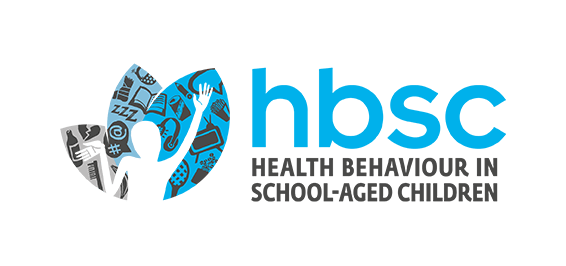New WHO/HBSC report reveals alarming decline in adolescent condom use across Europe, Central Asia and Canada
The WHO Regional Office for Europe has today released a new report from the Health Behaviour in School-aged Children (HBSC) study, revealing concerning trends in adolescent sexual health. The report, “A focus on adolescent sexual health in Europe, central Asia and Canada,” is based on data from over 242,000 15-year-olds across 42 countries and regions. It highlights a significant decline in condom use among sexually active adolescents since 2014 and worryingly high rates of unprotected sex, raising urgent concerns about the risk of sexually transmitted infections (STIs) and unintended pregnancies among young people.
Key findings from the report inlcude:
- Decline in condom use: The proportion of sexually active adolescents using condoms at last intercourse fell from 70% to 61% among boys and 63% to 57% among girls between 2014 and 2022. This decline was observed across multiple countries and regions, with some experiencing more dramatic reductions than others.
- High rates of unprotected sex: Almost a third of adolescents (30%) reported using neither a condom nor the contraceptive pill at last intercourse, a figure that has barely changed since 2018. This puts a substantial proportion of young people at risk of STIs and unintended pregnancies.
- Socio-economic disparities: Adolescents from low-affluence families were more likely to report not using a condom or the contraceptive pill at last sexual intercourse than their peers from more affluent families (33% compared with 25%). This highlights the need for targeted interventions to address health inequalities.
- Stable contraceptive pill use: Use of the contraceptive pill has remained relatively stable between 2014 and 2022, with 26% of 15-year-olds reporting that they or their partners used the contraceptive pill at their last sexual intercourse.
- Wide geographical variations: The report revealed substantial differences in sexual health indicators across countries, reflecting diverse cultural norms and access to education and services.
Far-reaching consequences of unprotected sex
The report underscores the urgent need for targeted interventions to address these concerning trends and promote safer sexual practices among young people. It calls for sustainable investments in three key areas:
- Age-appropriate comprehensive sexuality education: Implement and fund evidence-based sexuality education programs in schools that cover a wide range of topics, including contraception, STIs, consent, healthy relationships, gender equality, and LGBTQIA+ issues.
- Youth-friendly sexual and reproductive health services: Ensure that adolescents everywhere have access to confidential, non-judgmental, and affordable sexual health services that meet their specific needs and preferences.
- Enabling policies and environments that support adolescent health and rights: This includes promoting open dialogue about sexual health within families, schools, and communities to reduce stigma and increase awareness.
Need for comprehensive sexuality education
Dr András Költő, lead author of the report from the University of Galway, emphasised the importance of comprehensive sexuality education: “Comprehensive sexuality education is key to closing these gaps and empowering all young people to make informed decisions about sex at a particularly vulnerable moment in their lives, as they transition from adolescence to adulthood. But education must go beyond just providing information. Young people need safe spaces to discuss issues like consent, intimate relationships, gender identity and sexual orientation. We should help them develop crucial life skills including transparent, non-judgmental communication and decision-making.”
A call to action
Dr Margreet de Looze from Utrecht University, a co-author of the report, added: “The findings of this report should serve as a catalyst for action. Adolescents deserve the knowledge and resources to make informed decisions about their sexual health. We have the evidence, the tools, and the strategies to improve adolescent sexual health outcomes. What we need is the political will and resources to make it happen.”
Recommendations for policymakers and educators
The report also recommends providing specialised training for teachers and healthcare providers to deliver effective and inclusive sex education, and conducting further research to investigate the underlying reasons for the decline in condom use and variations in sexual health behaviours across different populations.
Urgent need for action
Dr Hans Henri P Kluge, WHO Regional Director for Europe, stressed the urgency of the situation: “Age-appropriate comprehensive sexuality education remains neglected in many countries, and where it is available, it has increasingly come under attack in recent years on the false premise that it encourages sexual behaviour. The truth is that equipping young persons with the right knowledge at the right time leads to optimal health outcomes linked to responsible behaviour and choices. We need immediate and sustained action, underpinned by data and evidence, to halt this cascade of negative outcomes, including the likelihood of higher STI rates, increased healthcare costs, and disrupted education and career paths for young persons who do not receive the timely information and support they need.”
A foundation for life and love
As Dr Kluge concluded: “Ultimately, what we are seeking to achieve for young persons is a solid foundation for life and love. Sexual and reproductive health and rights, informed by the right knowledge at the right time along with the right health and well-being services at the right time, is critical. By empowering adolescents to make informed decisions about their sexual health, we ultimately safeguard and improve their overall well-being. This is what all parents and families should want for their children, everywhere.”
Dr Weber emphasised the importance of a multi-faceted approach, stating, “Addressing the complex issue of adolescent health requires a combination of individual, family, community, and policy-level interventions. We need to create environments that support healthy choices and empower young people to take control of their health.”
Dr Weber emphasised the importance of a multi-faceted approach, stating, “Addressing the complex issue of adolescent health requires a combination of individual, family, community, and policy-level interventions. We need to create environments that support healthy choices and empower young people to take control of their health.”
Read the report (English)

